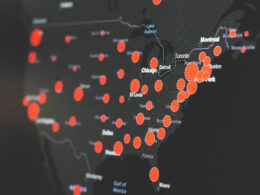Anticipating your customers’ wants and needs isn’t a superpower or gimmicky mind trick – it’s a valuable business strategy that supercharges sales!
When you stay ten steps ahead of the consumer, you resolve problems before they arise. You become a trailblazer within your industry, always hitting the nail on the head with innovative products and services.
By Linda Vetter, SVP, Marketing, 3radical
Put simply, predicting customer behavior makes you stand out in crowded markets. It helps you understand what’s working and, most importantly, what’s not. You can then use this knowledge to create relevant and revenue-generating marketing campaigns.
Curious? Keep reading as we reveal what you need to know about predicting customer behavior with data, including:
- What is customer behavior prediction?
- What customer behavior should you predict?
- Why is customer behavior prediction so important?
- How to predict customer behavior with data
What is customer behavior prediction?
Customer behavior prediction is a forecasting tool that dives deeper into consumer psychology. It produces a roadmap of expectations by analyzing existing data and assessing the current market and socioeconomic landscape.
There are countless avenues for collecting data, including real-time analytics, focus groups and conversational marketing. Sound too much like hard work? You can also use a clever customer engagement solution that condenses and interprets information for maximum results.
Customer behavior prediction takes into account:
- Previous purchases and spending habits
- Product or service relevance
- Political climate
- Economic health
- Demographics (age, sex and location)
- Lifestyle
- Education
- Occupation
What customer behaviors should you predict?
Churn rate
Also known as customer attrition, churn rate is the speed at which people stop doing business with a brand. It can signify a sad decline in sales or an army of enthusiastic advocates. The higher the number, the worse the outcome.
Calculating your churn rate and determining the drop-off points are crucial to predicting your brand’s success. A high churn rate suggests you need to revisit your marketing strategy or streamline your UX, while a low churn rate indicates engaged consumers.
Retention
Maintaining relationships with existing customers is cheaper than acquiring new ones, which is why retention is crucial. Knowing your retention rate helps you predict consumer spending year-on-year. Plus, you can potentially save money by streamlining your marketing efforts.
A higher retention rate signifies happy consumers who are more likely to share social posts and refer friends. Is your retention rate in the red? Swap brand-new campaigns and sign-up incentives for post-purchase care, follow-up emails, and loyalty schemes.
Satisfaction
Satisfaction is one of the easiest consumer behaviors to gauge and predict. Glance at social media or flick through customer service emails to identify recurring problems. Once you’ve fixed them, you’re guaranteed better performance.
Of course, some people aren’t as forthright with their feedback. That’s where customer engagement solutions step in. Our digital experts monitor click-through rates, website traffic, and user drop-off points to build a more reliable perception of your brand.
Remember, satisfied customers are more likely to make repeat purchases. There’s value in nurturing your existing community.
Why is predicting customer behavior so important?
Audience segmentation
Every time someone visits your website, they leave behind a digital footprint. You can use this information to create audience segments based on the probability of sales.
For example, you could build a group of people who have spent countless hours browsing your website but haven’t bought anything yet. They are clearly interested in your products or service but might need a push from a well-timed offer. Or you could segment high-value audiences who are more susceptible to retargeting ads and future promotions.
Remotivates lapsed or infrequent buyers
Predicting customer behavior with data allows you to remotivate lapsed or infrequent buyers. Now you know more about them and their spending habits, you can create powerful personalized experiences that are too good to ignore.
Data also reveals where you’re losing customers. Specifying this visitor subset tells you what changes you need to make to improve retention.
Highlights opportunities
Brands that stay on trend do well; but those that innovate do better! Take Peloton, for example – they started as a spinning studio but anticipated a desire for more intense home workouts. They now use immersive software and cutting-edge technology to engage riders and collect meaningful data.
Predicting customer behavior and being bold enough to take action will revolutionize your brand. Use data to identify gaps in the market and offer solutions that improve your customers’ lives.
How to predict customer behavior with data
Customer behavior modeling
Let’s move on to the nitty gritty stuff – customer behavior modeling. This in-depth mathematical approach observes common behaviors among particular groups of customers to predict how similar customers will behave in similar circumstances.
It’s instrumental to increasing the success of your marketing campaigns because you can target the most receptive groups. You can also foresee which customers will churn to protect retention rates.
Surveys and social listening
Thanks to its complexity, customer behavioral modeling is best left to digital customer engagement solutions. However, you can do a few simple things in-house to forecast customer behavior.
Listening to and acting upon feedback via surveys and social listening will enhance the customer experience. Cared for consumers will leave a wealth of positive referrals and reviews, enticing more people to your brand.
Brand health assessment
Measuring brand health sounds complicated, but it’s relatively straightforward. Assess your channels to get an overall idea of your brand’s strengths and weaknesses, then provide innovative solutions.
Pay attention to:
- Brand awareness, including social shares and media mentions
- Brand reputation, including reviews and ratings
- Employee engagement
- Brand positioning
Predict consumer behavior with a customer engagement solution
Since none of us are mind readers with giant crystal balls, we need experts to help decipher data in order to catapult our businesses to new heights! Consider investing in a customer engagement solution to help you unearth valuable insights and maximize profits. Using the multi-faceted approach similar to what we outlined here you can motivate buyers, build loyalty, and empower advocacy.











